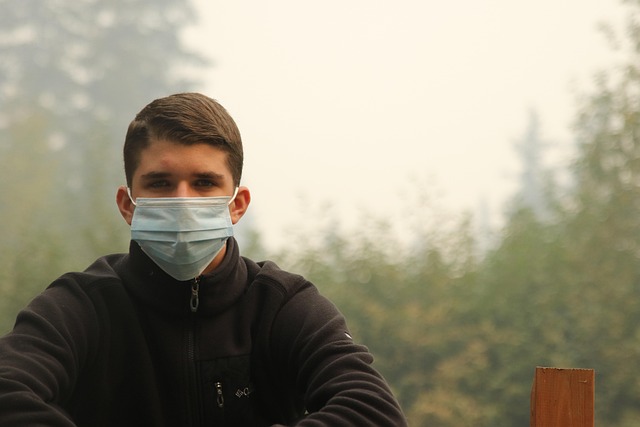
The Fiery Threat: Understanding the Wildfire Landscape
In the sun-drenched expanses and rugged terrains of Alabama, wildfires pose a significant and growing threat. As climate conditions shift and human encroachment continues, the likelihood of devastating fires increases, prompting homeowners, builders, and sellers to take proactive measures. The stakes are high, not just for the environment but for the safety of families and their livelihoods. With flames capable of consuming everything in their path, understanding how to protect against wildfire damage is not merely an option; it is a necessity.
In the face of such a perilous situation, one must consider the implications of wildfire damage—not just to property but also to the emotional and financial well-being of individuals and communities. From the glimmering homes nestled in the foothills to sprawling commercial properties, the threat looms large. This blog aims to illuminate the steps you can take to safeguard your investments and loved ones from the fiery grasp of wildfires.
Know Your Terrain: Assessing Fire Risk
Before implementing any protective measures, it is imperative to understand the fire risk associated with your property. Factors such as location, vegetation, and historical fire activity play a crucial role in determining vulnerability. Here are key considerations:
1. **Location**: Properties situated near wooded areas or grasslands are at a higher risk. Understanding the proximity to natural fuel sources is essential.
2. **Topography**: The lay of the land can influence fire behavior. Steep slopes may accelerate flames and embers, increasing the threat to nearby structures.
3. **Vegetation Type**: Certain plants are more flammable than others. Familiarize yourself with local flora and their potential to ignite and spread fire.
4. **Historical Data**: Research past wildfire incidents in your region. Knowing when and how often fires have occurred can provide valuable insights into potential risks.
By conducting a thorough risk assessment, you can better tailor your protective strategies to the unique challenges posed by your environment.
Creating a Defensible Space: Your First Line of Defense
One of the most effective ways to protect your property is to create a defensible space—a buffer zone between your home and the surrounding landscape. This space can significantly reduce the risk of wildfire damage. Here’s how to establish it:
1. **Clear Vegetation**: Remove combustible materials, such as dry leaves, dead plants, and debris, within at least 30 feet of your home.
2. **Trim Trees and Shrubs**: Ensure that trees are at least 10 feet away from your home and that shrubbery is well-maintained. Prune branches that hang over the roof and remove low-hanging branches that could ignite.
3. **Use Fire-Resistant Landscaping**: Opt for non-combustible plants and materials in your landscaping choices. Consider using gravel or stone instead of mulch, which can easily catch fire.
4. **Create Zones**: Establish different zones based on proximity to your home. The first zone (0-5 feet) should be clear of all vegetation, the second zone (5-30 feet) can feature fire-resistant plants, and the third zone (30-100 feet) can include more natural vegetation but should still be managed for fire safety.
5. **Install Hardscaping**: Use patios, walkways, and driveways made of non-combustible materials to create barriers that can slow the spread of fire.
By implementing these strategies, you can significantly enhance your property’s resilience to wildfire threats.
Fortifying Your Home: Building and Renovation Tips
If you are a builder or a homeowner considering renovations, there are several key features you can incorporate into your property to enhance fire safety. These features not only protect your home but can also add value and appeal to potential buyers.
1. **Fire-Resistant Materials**: Use non-combustible materials for roofing, siding, and decks. Options like metal roofing, stucco, and fiber-cement siding can withstand high temperatures.
2. **Double-Paned Windows**: Install tempered double-paned windows that can resist heat and prevent breakage.
3. **Fire-Resistant Vents**: Ensure that vents are covered with metal mesh to prevent embers from entering your home.
4. **Sprinkler Systems**: Consider installing a home sprinkler system that can automatically activate during a fire outbreak, providing an additional layer of protection.
5. **Gutters and Roofs**: Maintain clean gutters and roofs to prevent the accumulation of combustible materials. Install gutter guards to keep debris out.
6. **Firebreaks**: If your property is large, create firebreaks—areas devoid of fuel—around your home to slow down advancing flames.
These strategies not only protect your home but also demonstrate a commitment to safety that can appeal to future buyers, potentially increasing property value.
Insurance Considerations: Safeguarding Your Investment
As you take steps to protect your property, it is equally important to ensure that you have the right insurance coverage in place. Wildfires can cause extensive damage, and having adequate insurance can save you from devastating financial losses. Here are some tips:
1. **Review Your Policy**: Ensure that your homeowner’s insurance covers wildfire damage. Talk to your insurance agent about specific coverage details.
2. **Consider Additional Coverage**: Depending on your risk level, you may want to consider additional wildfire insurance or an umbrella policy for extra protection.
3. **Document Your Property**: Keep a detailed inventory of your possessions, including photographs and receipts. This will facilitate the claims process in the event of a disaster.
4. **Stay Informed**: Regularly update your policy based on any renovations or changes in property value.
5. **Engage with Local Authorities**: Stay in touch with local fire departments and emergency services to understand the specific risks in your area as well as resources available to you.
By securing the right insurance coverage, you can protect yourself from the financial repercussions of wildfire damage while focusing on preventative measures.
Community Preparedness: A Collective Responsibility
Wildfire protection is not solely an individual endeavor; it requires collective action within communities. Engaging with neighbors and local organizations can amplify your efforts to mitigate fire risks. Here’s how to foster community preparedness:
1. **Organize Community Meetings**: Host discussions on wildfire preparedness and share strategies for creating defensible spaces and fortifying homes.
2. **Establish a Neighborhood Watch**: Create a network of vigilant neighbors who can monitor and report any signs of fire risk or unusual activity.
3. **Participate in Fire Safety Programs**: Collaborate with local fire departments to participate in fire safety programs or workshops that educate residents about wildfire prevention.
4. **Plan Evacuation Routes**: Work together to establish and practice evacuation routes, ensuring that everyone knows how to exit the area safely in case of an emergency.
5. **Support Local Fire Services**: Advocate for funding and resources for local fire services, ensuring they have the tools necessary to combat wildfires effectively.
By fostering a culture of preparedness, communities can enhance their resilience against wildfire threats while supporting each other in times of crisis.
The Aftermath: Recovery and Resilience
In the unfortunate event of a wildfire, recovery can be a long and challenging process. However, with the right approach, resilience can emerge from the ashes. Here are steps to consider during recovery:
1. **Assess Damage**: After a wildfire, conduct a thorough assessment of your property to understand the extent of the damage and what needs to be repaired or replaced.
2. **Contact Your Insurance**: Promptly report the damage to your insurance provider and initiate the claims process.
3. **Engage Professionals**: Consider hiring professionals for cleanup and repairs to ensure safety and compliance with local regulations.
4. **Seek Community Support**: Lean on your community for emotional and practical support during recovery. Local organizations often provide resources for individuals affected by disasters.
5. **Rebuild Wisely**: When rebuilding, apply the lessons learned about fire safety to create a more resilient property that can withstand future threats.
In conclusion, protecting against wildfire damage requires a multifaceted approach that encompasses awareness, preparation, and community engagement. Whether you are a buyer, seller, builder, or lender, understanding these strategies can help you safeguard your investments and contribute to a safer environment for all. If you have any questions about how to effectively protect your property from wildfire damage or need guidance on title insurance in Alabama, don’t hesitate to reach out to us. Visit our contact page for more information and personalized assistance.
